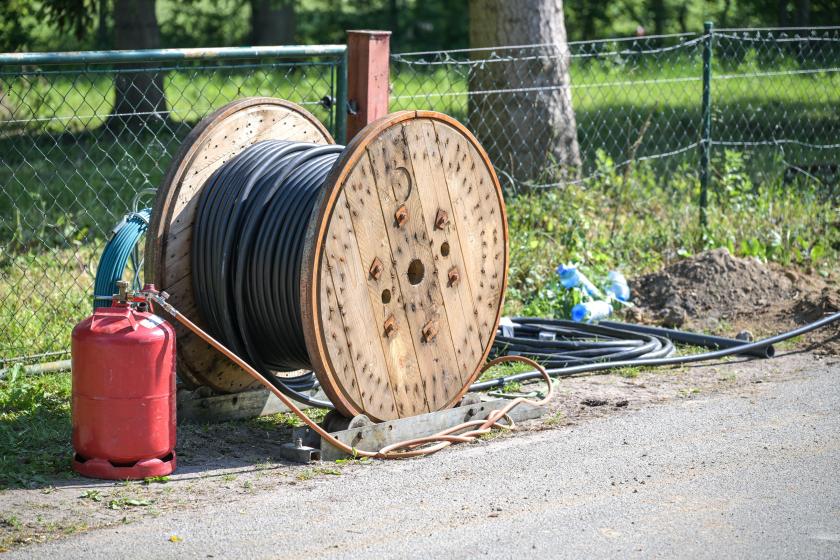The Growing Middle Mile Networks Funding Debate
Will the $1 billion in grants awarded to expand and upgrade these networks be enough to close the digital divide? Some say no.
November 30, 2023

There’s debate as to whether the NTIA’s $1 billion middle mile network funding program is enough to upgrade and extend high-speed networks connecting locations to the internet backbone.
The $65 billion Broadband Equity, Access, and Deployment (BEAD) provides funding to states to deliver broadband access to unserved and underserved locations. But can middle mile networks handle the resulting increase from the larger last mile networks in largely rural areas?
The Enabling Broadband Middle Mile Networks Program
Congress appropriated $1 billion for the program and identified two key objectives: to “encourage the expansion and extension of middle mile infrastructure to reduce the cost of connecting unserved and underserved areas to the backbone of the internet” and to “promote broadband connection resiliency through the creation of alternative network connection paths that can be designed to prevent single points of failure on a broadband network.”
All funding for grant awards from the Enabling Middle Mile Broadband Infrastructure Program has been awarded to 36 organizations across 40 states and territories. "No additional awards will be announced," said the NTIA in a press release.
The Middle Mile Debate
“There is much debate about just how useful the subsidization of those networks is actually going to be,” explained Jeff Heynen, VP of Broadband Access and Home Networking with Dell’Oro Group, a global market research and analysis firm. “There are some who are pointing to the $1 billion that’s been doled out as more than enough to cover the additional capacity requirements and location expansions to support the growth in residential broadband and enterprise connectivity.”
Huge response to the middle mile funding program
The Department of Commerce's National Telecommunications and Information Administration (NTIA) announced in September over 260 applications were submitted, totaling more than $7.47 billion in funding requests for the Enabling Middle Mile Infrastructure Grant Program.
The other side of the debate
The other side of the debate has many claiming that the $1 billion is not nearly enough.
"The program itself was massively oversubscribed," added Heynen. "The debate is something to keep an eye on, especially for larger enterprises who have multiple locations and work with companies like Zayo for SD-WAN, SASE, and other services across these multiple locations."
The NTIA’s take on middle mile networks
The NTIA would not say whether it believes the effort needs more funding. "Clearly, there is significant demand for these networks," said a spokesperson for the group. "We haven't publicly supported legislation that would provide additional funding." It's unclear what happens to all the grant applications that were not funded.
What is at stake with upgrading and expanding middle mile networks?
The stakes of upgrading and expanding middle mile networks are high for enterprises looking to implement bandwidth and security architectures key to transform the way they do business.
Election year: Given the oversubscription of middle mile networks, Heynen believes the $1 billion from the NTIA in grant funding will not nearly be enough. He is concerned that in an election year, the ability to secure additional funds from a polarized Congress would be extremely tough.
Expansion to rural areas: Will the middle mile funding be used in part to extend current networks to unserved areas? Some have claimed California’s middle mile network bulks up current networks but does little to serve new areas.
Competition: Many areas do not have middle mile access or have one ISP option, meaning an outage can be devastating. One estimate claims that only 40% of the population has access to more than one ISP. The resulting lack of competition often translates into higher prices, with ISPs needing to negotiate with competitors for middle mile network capacity.
Choice: Selling direct to enterprises without choice can make it tougher for businesses to secure crucial service level agreements for offerings such as SD-WAN. Companies are seeking more and stronger SLAs as they move to emerging architectures to secure flexibility.
Advice for enterprises
Enterprise IT would be well advised to look at the big picture when considering WAN evolution undertakings.
“With the evolution of the larger SD-WAN and SASE (Secure Access Service Edge) implementation models very much in flux, it is more important than ever to look holistically at the enterprise communications infrastructure when undertaking modernization projects,” writes ChoiceTel, a technology consulting firm. "Maturity in the market is important, as well as a commitment to application performance backed by SLAs, application visibility, and many other aspects."
The bottom line on middle mile networks
The General Accounting Office (GAO) was asked to investigate the funding process. In October, the group said it recommends that the NTIA:
Establish performance measures for the middle-mile grant program and ensure the measures have a specified target.
Establish a process for developing performance goals and measures during program planning and design.
The GAO said the NTIA agreed with its recommendations.
Related articles:
About the Author
You May Also Like
Maximizing cloud potential: Building and operating an effective Cloud Center of Excellence (CCoE)
September 10, 2024Radical Automation of ITSM
September 19, 2024Maximizing Manufacturing Efficiency with Real-Time Production Monitoring
September 25, 2024





